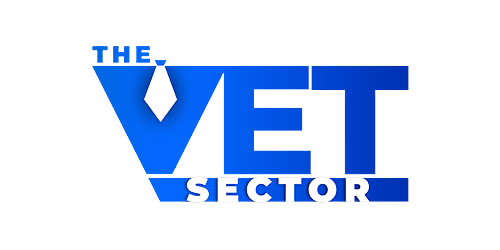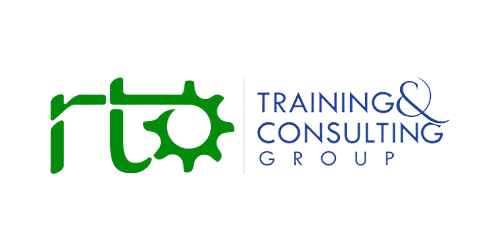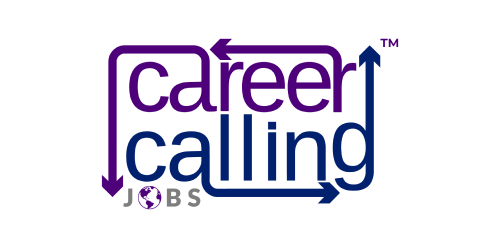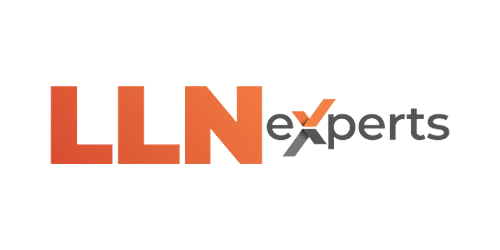How Trust-Based Leadership Transforms Training Organisations
In the rapidly evolving landscape of vocational education and training, one factor consistently separates thriving Registered Training Organisations (RTOs) from those that struggle: the ability to make timely, effective decisions at all levels of the organisation. Yet many RTO leaders inadvertently create decision-making bottlenecks that stifle innovation, slow responsiveness to industry needs, and ultimately undermine educational quality.
"The best training organisations are built on trust, not control," explains the CEO of a prominent Queensland-based RTO that has consistently achieved outstanding compliance and student outcomes over the past decade. "And the most effective RTO leaders don't slow things down—they create a culture where trainers, assessors, and administrators feel confident and capable of making decisions when it counts."
This article explores how forward-thinking RTO leaders are transforming their organisations by distributing decision-making authority, building cultures of trust, and empowering their teams to respond with agility to the challenges of modern vocational education.
The High Cost of Centralised Decision-Making in VET
The vocational education sector faces unique pressures, including shifting compliance requirements, evolving training packages, changing industry needs, and diverse student expectations. When every decision must flow through a single leader or a rigid management hierarchy, the consequences can be severe. Delayed responses to student needs potentially affect retention and outcomes. Slow adaptation to changing compliance requirements increases regulatory risk. The organisation's ability to customise training delivery to meet employer needs becomes reduced. Leadership teams trying to manage every detail face burnout, while staff who feel their expertise is undervalued become disengaged. Perhaps most critically, opportunities for innovation in training and assessment are frequently missed.
"I used to be the bottleneck in our RTO," admits Director of Training at a medium-sized metropolitan provider specialising in business and IT qualifications. "Every assessment tool needed my approval, every trainer had to check their delivery plan with me, and compliance documentation sat on my desk for weeks. I thought I was maintaining quality, but I was actually compromising it by slowing everything down."
Tran's experience reflects a common pattern in the sector. Many RTO leaders, particularly those with strong subject matter expertise or compliance backgrounds, feel compelled to personally oversee every aspect of operations. While often well-intentioned, this approach fundamentally misunderstands the role of leadership in complex educational organisations.
From Military to VET: Lessons in Distributed Decision-Making
The parallels between military operations and RTO management might not be immediately obvious, but Mr. Henderson sees them clearly. After transitioning from a career as an Army officer to becoming the Quality Manager at a large rural training provider, Henderson recognised that the principles of effective leadership translate remarkably well across these seemingly different contexts.
"In the military, I learned that centralised control simply doesn't work in dynamic situations," Henderson explains. "If every tactical decision had to go up the chain of command, operations would grind to a halt. The same is true in training organisations. If your trainers have to seek approval for every adjustment to delivery, or if your administrative team can't resolve student issues without escalation, you create unnecessary friction in the system."
Henderson implemented what he calls "bounded autonomy" at his RTO—clearly defined parameters within which staff have complete freedom to make decisions. The results were transformative. Assessment validation cycles have been shortened from months to weeks. Student complaints decreased by approximately one-third as front-line staff could resolve issues immediately. Trainer satisfaction increased as they gained greater control over their delivery methods. Perhaps most importantly, quality improved as staff took greater ownership of outcomes.
"The key was establishing clear expectations and guardrails," Henderson notes. "We developed decision-making frameworks that outlined what matters could be handled at what level, what required consultation versus approval, and what truly needed to be escalated. Then we trained everyone on using these frameworks and stood back to let them work."
Creating Decision-Making Clarity in RTOs
For distributed decision-making to succeed, clarity becomes paramount. Team members need to understand exactly what decisions they can make, what success looks like, and how their decisions connect to organisational goals and compliance requirements.
An organisational psychologist who consults with training organisations across Australia, offers a structured approach to creating this clarity: "First, map your decision types—what decisions are made regularly in your RTO, from scheduling classes to modifying assessment approaches to addressing student issues. Then assign clear authority levels for each type: what can be decided independently, what requires consultation, and what needs approval. Finally, document and communicate these expectations across the organisation."
Patel recommends a decision matrix that categorises decisions along two dimensions: impact (low to high) and frequency (rare to common). High-frequency, low-impact decisions should generally be pushed down to the lowest appropriate level, while rare, high-impact decisions may warrant greater oversight.
The results of this reflection led to a transformation in how the RTO operates. Program managers now have the authority to modify delivery schedules within defined parameters, trainers can adapt assessment contexts to better match student backgrounds without formal approval processes, and administrative staff have clear guidance on when they can make exceptions to standard procedures.
Trust as the Foundation of Empowered RTOs
Systemically, transparent processes, consistent policy application, and accountability mechanisms focused on improvement, not blame, are necessary. Interpersonally, leaders must demonstrate belief in their team's capabilities, acknowledge initiative, and offer supportive responses when errors occur.
This dual approach to trust has proven crucial in transforming previously rigid, hierarchical cultures. Initially, excessive oversight, such as a compliance manager approving all assessment evidence, led to staff feeling undervalued, delays for learners, and overburdened administrative processes.
The solution involved systemic changes: implementing standardised tools with clear guidance, establishing quality sampling instead of comprehensive reviews, and creating straightforward escalation routes for complex situations. Equally vital was the interpersonal aspect: consistently acknowledging good work, viewing occasional mistakes as learning opportunities, and demonstrating the value of staff expertise through actions.
Building this trust took time, beginning with granting more autonomy in preliminary assessments before extending to final evaluations. Support was provided during the transition, including optional review processes. Crucially, successes were celebrated, which occurred frequently.
Real-World Impact: When Empowered Decision-Making Makes the Difference
Distributed decision-making becomes critical in urgent situations, allowing training providers to respond swiftly to unexpected challenges or opportunities. Consider these instances where empowered decision-making made a significant difference.
A training provider specialising in tourism and hospitality qualifications was approached by a major employer for a customised program needed within three weeks, a timeline impossible under their traditional approval process. Because clear parameters for customisation and empowered trainers were in place, they responded immediately.
The lead trainer consulted with colleagues, designed a suitable customisation within the training package requirements, and confirmed resource availability within two days. The program's successful launch led to a lasting partnership with the employer. This success was attributed not only to the trainer's expertise but also to their confidence in having the authority to act within defined boundaries.
When severe flooding impacted a region, a technical college faced a challenge with scheduled workplace assessments for apprentices, potentially causing months of delays. Previously, modifying the assessment approach would have required extensive approvals. However, their assessors were empowered to make decisions within clear guidelines.
The assessment team rapidly developed an alternative assessment strategy that maintained validity while accommodating the circumstances. They contacted affected apprentices and employers, implemented the revised approach, and ensured training continuity despite the disaster. The speed and confidence with which they implemented the solution, without needing prior permission, highlighted their empowerment.
At a technology institute, a student support officer noticed a pattern of international students struggling with assessment requirements early in their courses. Utilising the institute's empowered decision-making framework, and without needing to escalate through traditional channels, the officer, whose team had authority for minor interventions, designed a supplementary orientation session addressing assessment expectations, collaborated with trainers, and scheduled the sessions early in the assessment period.
This initiative led to improved first-attempt success rates and higher student satisfaction. This was not a major strategic initiative requiring executive approval, but a timely and effective tactical response by the individual closest to the issue.
Implementing Empowered Decision-Making: A Roadmap for RTO Leaders
Transforming a training organisation into one where decision-making is effectively distributed requires a deliberate strategy and sustained commitment. The journey begins with leadership self-awareness. Leaders should honestly assess their current approach by examining which decisions they currently make that could be delegated, where their involvement adds genuine value versus where it might create bottlenecks, what concerns or fears may be driving their need for control, and how much time is spent reviewing decisions that rarely require changes. Often, the most challenging step is recognising how leadership behaviours might limit organisational performance; meaningful transformation starts with a willingness to examine and modify these approaches.
The next step is to establish clarity by systematically identifying the decisions made throughout the organisation and determining the appropriate level of authority for each. This involves categorising decisions by impact, frequency, compliance risk, and expertise required; defining which decisions can be made independently by staff at different levels; clarifying which require consultation versus approval; setting documentation requirements and communication expectations; and providing simple, accessible decision-making tools for staff.
Empowering staff to make decisions also means investing in their capability and confidence. This can be achieved through targeted professional development in critical thinking and decision-making, ensuring all staff have a solid understanding of compliance requirements relevant to their roles, and creating opportunities for guided practice before granting full autonomy. Establishing mentoring relationships supports those new to expanded decision authority, while recognising and celebrating good decisions helps build confidence across the organisation.
For distributed decision-making to thrive, it is essential to foster a culture where people feel safe to take reasonable risks. This includes adopting a "no blame" approach to decisions made in good faith, ensuring easy access to expertise when staff are uncertain, and implementing quality assurance processes that focus on improvement rather than punishment. Regularly reviewing and discussing decisions as learning opportunities, and accepting that occasional mistakes are an inevitable part of an empowered culture, further supports this environment.
Implementing empowered decision-making is an ongoing process, not a one-time change. Organisations should regularly review how decision frameworks are working in practice, gather feedback from staff on barriers and enablers, track key metrics affected by more distributed authority, and be willing to adjust boundaries as capability develops or circumstances change. Celebrating and sharing success stories reinforces the value of the approach. The most successful organisations treat their decision frameworks as living documents, continually refining them based on experience, expanding authority where it is working well, and providing additional guidance where needed.
The Leadership Mindset Shift
Adopting an empowered decision-making model within a training organisation requires a fundamental shift in how leaders perceive their role. Rather than positioning themselves as the sole or primary decision-maker, leaders must focus on creating the conditions that enable sound decision-making at all levels of the organisation. This means setting a clear direction, establishing boundaries and expectations, developing the capability of staff, and then allowing others to take ownership of decisions within those parameters.
Contemporary research and sector commentary consistently highlight that effective leadership in vocational education and training is no longer about centralised authority or heroic individualism. In today’s complex and rapidly changing environment, no single leader can possess all the information, expertise, or capacity required to make every significant decision. Instead, leadership is increasingly seen as a collective and distributed process, where authority and responsibility are shared among teams and individuals. This approach not only builds organisational resilience and responsiveness but also fosters innovation and engagement across the workforce.
Empowering staff to participate in decision-making requires leaders to provide clear guardrails, relevant resources, and ongoing support. Effective leaders articulate the organisation’s goals and constraints, ensure staff have the information and training needed to make informed choices, and cultivate a culture of trust and accountability[1][4]. By doing so, they enable their teams to act autonomously while remaining aligned with the organisation’s mission and compliance requirements. Research shows that when decision-making is distributed and staff are genuinely trusted and equipped, organisations become more adaptable and better positioned to respond to both challenges and opportunities.
Ultimately, the leader’s role evolves from being the central decision-maker to being a facilitator of good decisions throughout the organisation. This shift not only improves organisational effectiveness but also supports the development of a more capable, motivated, and resilient workforce. The most successful training organisations are those where leaders invest in building decision-making capability at all levels, regularly review and refine their frameworks, and treat empowered decision-making as an ongoing, collaborative process rather than a one-time change.
Conclusion: The Future Belongs to Empowered RTOs
In a sector characterised by continuous change—evolving training packages, shifting regulatory requirements, changing industry needs, and diverse student expectations—the ability to make timely, effective decisions is not merely advantageous but essential to survival and success.
RTOs that empower staff at all levels to make appropriate decisions within clear frameworks can respond more quickly to challenges, innovate more effectively, and ultimately deliver better outcomes for students and industry partners. Meanwhile, their leaders can focus on strategic direction and organisational development rather than becoming mired in operational details.
The evidence from across the sector is clear: the future of vocational education belongs to organisations that can distribute decision-making effectively while maintaining quality and compliance. As RTO leader Sandra Walters puts it: "Leadership isn't about being the smartest person in the room. It's about building a room full of people who are ready and able to act without having to look over their shoulder."
For training organisations seeking to thrive in an increasingly complex environment, there is no more important leadership challenge than creating this culture of empowered, responsible decision-making at every level.


































